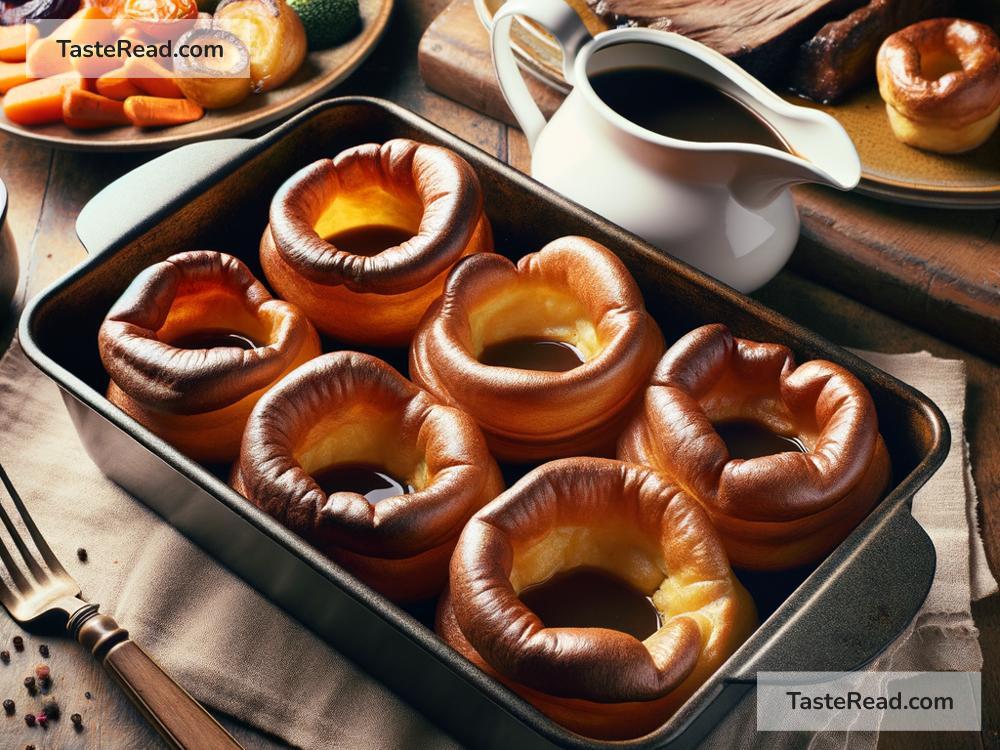The History of the British Yorkshire Pudding
The Yorkshire pudding is one of the most famous dishes in British cuisine. It has been enjoyed by millions of people for centuries and is often served with a traditional roast dinner. But its history is as rich as the dish itself. In this blog, we’ll explore where Yorkshire pudding comes from, how it evolved, and why it is still so beloved today.
Early Beginnings: Puddings in Britain
Before the Yorkshire pudding came to be, British cooks were already experimenting with various types of puddings. In medieval England, puddings were not the sweet desserts we think of today. Instead, they were savory dishes made from boiled meat, grains, or flour. These early puddings were hearty and helped feed people using affordable, simple ingredients.
By the 17th century, puddings had evolved further. People started using batter, made from flour, milk, and eggs, to create lighter, more versatile dishes. This batter could be fried, boiled, or baked, depending on the cook’s preferences. These early batter-based puddings laid the foundation for the Yorkshire pudding we know today.
The First Written Recipe
The Yorkshire pudding did not officially exist until the early 18th century. The first written recipe for a dish resembling Yorkshire pudding was published in 1737 in a book called The Whole Duty of a Woman. In this book, the dish was referred to as “dripping pudding.”
The recipe described pouring batter underneath a roasting joint of meat so that the fat and juices (known as “dripping”) from the meat would fall into the batter as it cooked. This made the pudding especially flavorful and helped make use of every part of the meal. Dripping pudding was popular because it was cheap, filling, and tasty—perfect for feeding large families.
When Did It Become “Yorkshire”?
The term “Yorkshire pudding” first appeared in print in 1747 in Hannah Glasse’s famous cookbook The Art of Cookery Made Plain and Easy. This book was one of the most influential cookbooks of its time, and it introduced the name “Yorkshire pudding” to a broader audience.
No one knows exactly why the dish was named after Yorkshire, a region in northern England. Some believe it is because Yorkshire’s flour was known for its high quality, making it perfect for batter-based recipes. Others think the name was simply a way to distinguish this specific type of pudding from similar dishes. Whatever the reason, the name stuck, and the dish became an iconic part of British culture.
How Yorkshire Pudding Evolved
At first, Yorkshire pudding was mainly used as an appetizer to fill people up before the main course. This made the meal feel bigger and more satisfying, especially for those who didn’t have much money or food. The pudding was served before the meat to ensure that the expensive protein would stretch further.
Over time, Yorkshire pudding became a side dish rather than a starter. It is now usually served alongside roast beef, potatoes, and vegetables as part of a traditional Sunday roast. Some people also enjoy it with other roasted meats or even as a standalone dish with gravy.
Yorkshire pudding has also been adapted in creative ways. Mini Yorkshire puddings filled with meat or vegetables have become popular appetizers, while larger puddings are sometimes used as “wraps” for filling ingredients. No matter how it’s served, the Yorkshire pudding remains versatile and much-loved.
A Cultural Symbol of Britain
The Yorkshire pudding is more than just food—it’s a cultural symbol of Britain. It represents tradition, family gatherings, and the art of making the most of simple ingredients. It has even inspired national pride, with many British people considering it a “must-have” at any Sunday roast dinner.
In 2008, Yorkshire pudding earned official recognition in Britain. The Royal Society of Chemistry declared that the dish could only truly be called Yorkshire pudding if it rose at least 4 inches tall. This shows just how important the dish has become in British culture.
Beyond Yorkshire and Britain
Yorkshire pudding is not just popular in the UK; it has also spread to other countries. In places like the U.S., Canada, and Australia, people have embraced the dish as part of British-inspired meals. It has even been adapted into new recipes to suit different tastes and cultures.
For example, Americans often compare Yorkshire pudding to popovers, a similar type of fluffy, baked batter. Some restaurants even serve Yorkshire pudding as part of holiday meals, adding their own twists to the classic recipe.
Why We Still Love Yorkshire Pudding
What makes Yorkshire pudding so special? It’s simple, affordable, and delicious. Its golden, crispy outside and soft, airy inside make the perfect combination. Whether drenched in gravy, served alongside juicy cuts of meat, or filled with tasty fillings, the pudding is always a treat.
Perhaps more than anything, Yorkshire pudding represents comfort and tradition. For centuries, it has brought families together over hearty, home-cooked meals. Today, it continues to be a staple of British cooking, reminding us of the joys of good food and good company.
So, whether you’re enjoying Yorkshire pudding on a Sunday roast or trying it for the first time, you’re participating in a long, delicious history. It’s a history that has stood the test of time, and one that will likely continue to warm hearts and bellies for generations to come.

